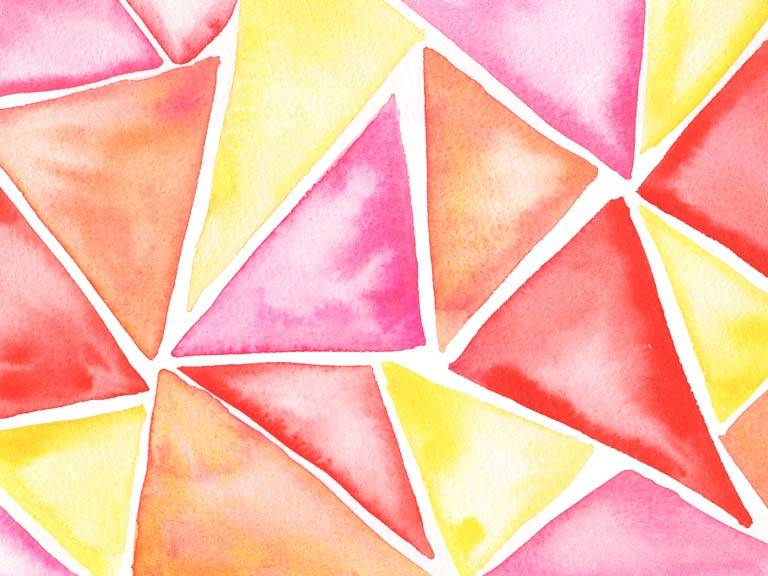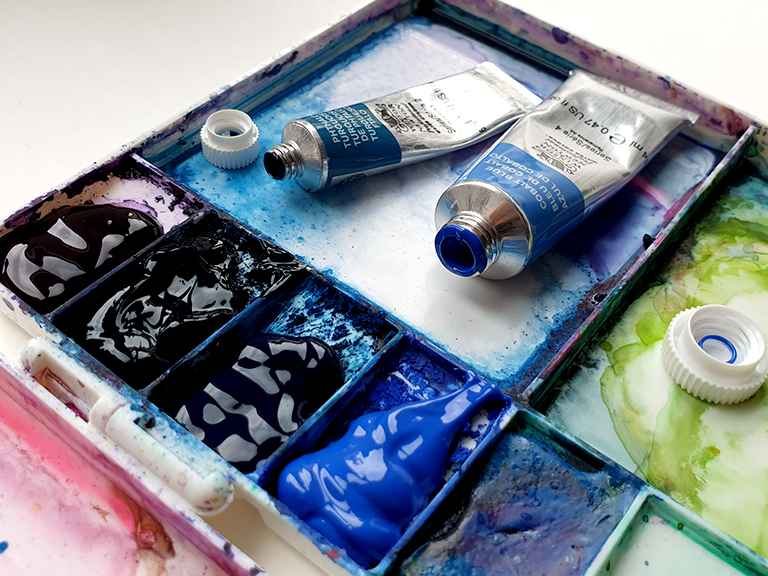Watercolour palettes are a core part of your watercolour supplies. But if you go into an art shop, or on a supplies website, there are dozens of options! How do watercolour beginners know what to look for, and what are the alternatives to traditional palettes?
Paint tin palettes
Many paint sets and tins offer their lids as mixing palettes. These offer a two in one supply but the downside is that you will have limited space for mixing colours. They’re generally great for travelling but you may want something bigger and freer.
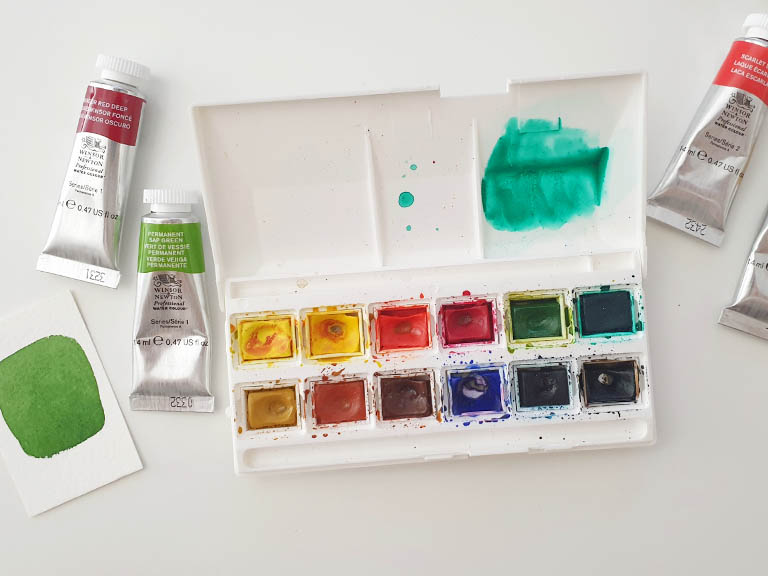
Plastic folding palettes
On social media you’ll see a lot of watercolourists using large plastic folding palettes. That’s what I use!
They have little wells around the edge for holding the colours and then larger mixing wells in the middle. They work well if you want to create a custom palette using tube watercolour paints, as you can squeeze a little paint out into the wells, let it dry and reactivate when you’re ready to paint.
I love these palettes because they’re big, cheap and easily hold lots of colours. But they’re also large if you like travelling or painting outdoors.
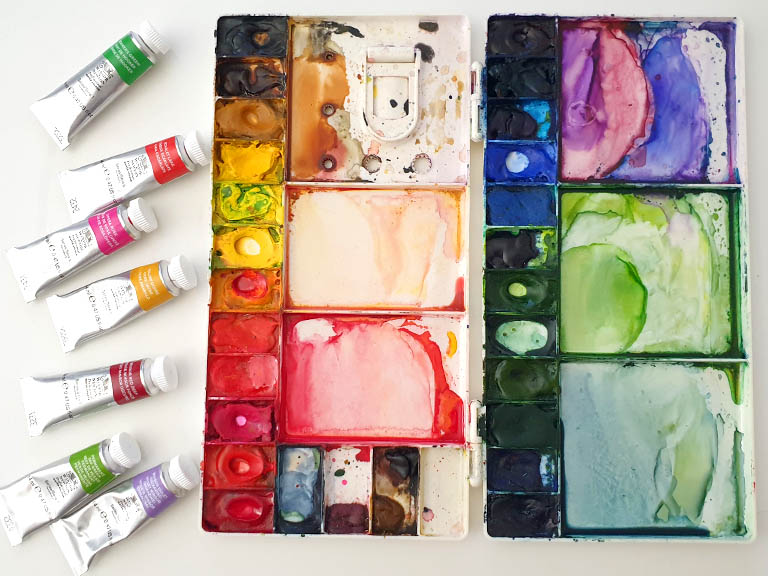
Daisy flower palettes
These flower shaped palettes have wells arranged like petals around a central circle. They can be plastic or ceramic. They’re great if you want to mix distinct colours in their own areas, but only have 7 wells to use at once. And there’s no place to store your paints so you’d need to use pans or another palette for tubes.
Ceramic palettes
If you don’t want plastic, ceramic palettes are the most common alternative. These come in a range of styles and shapes depending on how big you want them to be. They’re often very beautiful and can be decorative and unique. But they’re also heavy and not suitable for travelling.
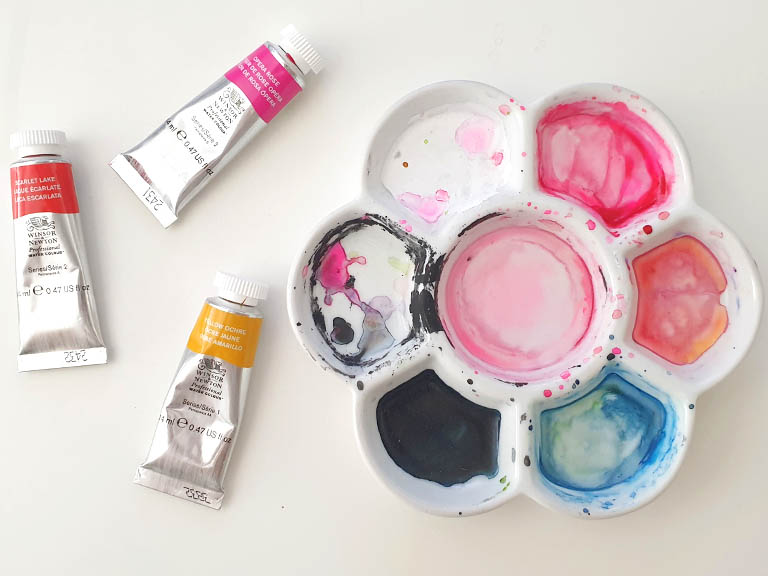
Using plates as palettes
Many people improvise a palette from something they already have in the house. A ceramic plate or dish will do the job! Others love a ceramic metal tray.
The only requirements are:
- Waterproof
- Plenty of space to mix
- A lip to stop the water dripping off the edge
How to clean your watercolour palette
Confession time – I almost never clean my palette! If I mix up too much colour, I simply reactivate it with water the next time I paint. I also mix new colours on top of the old ones- it gives great subtle mixes and interesting effects.
However, if your colours are getting muddy and brown, or contaminating your new colours, cleaning your palette is easy.
If it’s just for mixing and doesn’t contain any paint you want to keep, you can hold it under the tap and use your watercolour brush to dislodge old mixtures.
If you have a palette with paints around the edge and don’t want to lose them, you can get the mixing wells wet with a sopping brush. Wiggle it around to get all the paint and then wipe with a paper towel or cloth to pick up the colour. Repeat as needed!
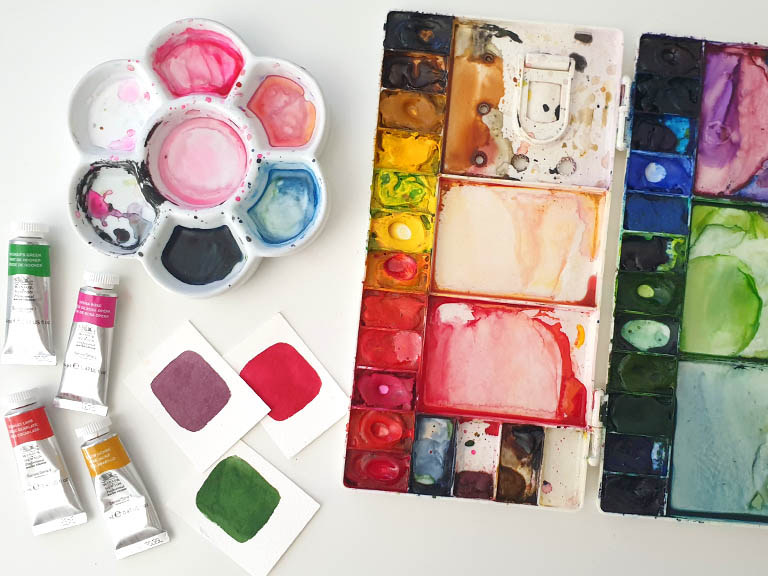
How to set up a watercolour palette
If like me you want to use a palette to hold tube paints, I recommend splitting into two halves. Keep one side for warm colours and the other for cool colours.
In my palette, I have warms on the left. It starts with black and browns, and then goes into yellows, oranges, reds and pink. I have space at the bottom for colours I use less often.
On the cool side I have purple at the top, then blues and into greens. It’s not a perfect system as I have changed colours and had to put them in whatever free spaces! Indigo is in bottom left with all the greens, and cool toned Payne’s grey had to go on the warm side.
As you can see, I’m not a perfectionist with it!
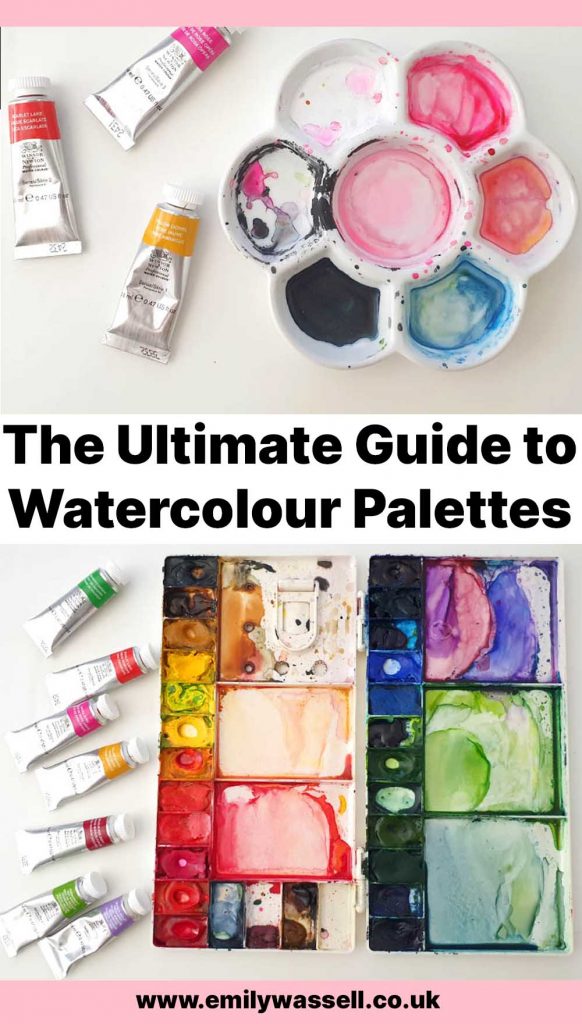
How to stop plastic palettes beading
Many new palettes have a problem with beading. It’s where the water mixture won’t stay put and separates into little beads and drops as you mix. It makes it harder to see what colour and value of paint you have. It’s caused by a finish on the plastic.
To fix it, dry the well and rub with something abrasive. A scouring sponge, wire wool or even toothpaste and an old toothbrush will work! Be careful not to rub hard enough to create grooves, you’re not trying to scratch it, only remove the final coating.
Clean and dry the well then try your paint again. You may need to repeat the process a few times! Palettes eventually stop beading as they get used anyway.
That’s everything you need to know about watercolour palettes! Keep reading to find out more about the best watercolour supplies:
Download my free watercolour supply guide
Feeling overwhelmed and confused by watercolour paints, papers and brushes? Download my free guide filled with insider info, including a list of good supplies for every budget, and my complete supply list!
